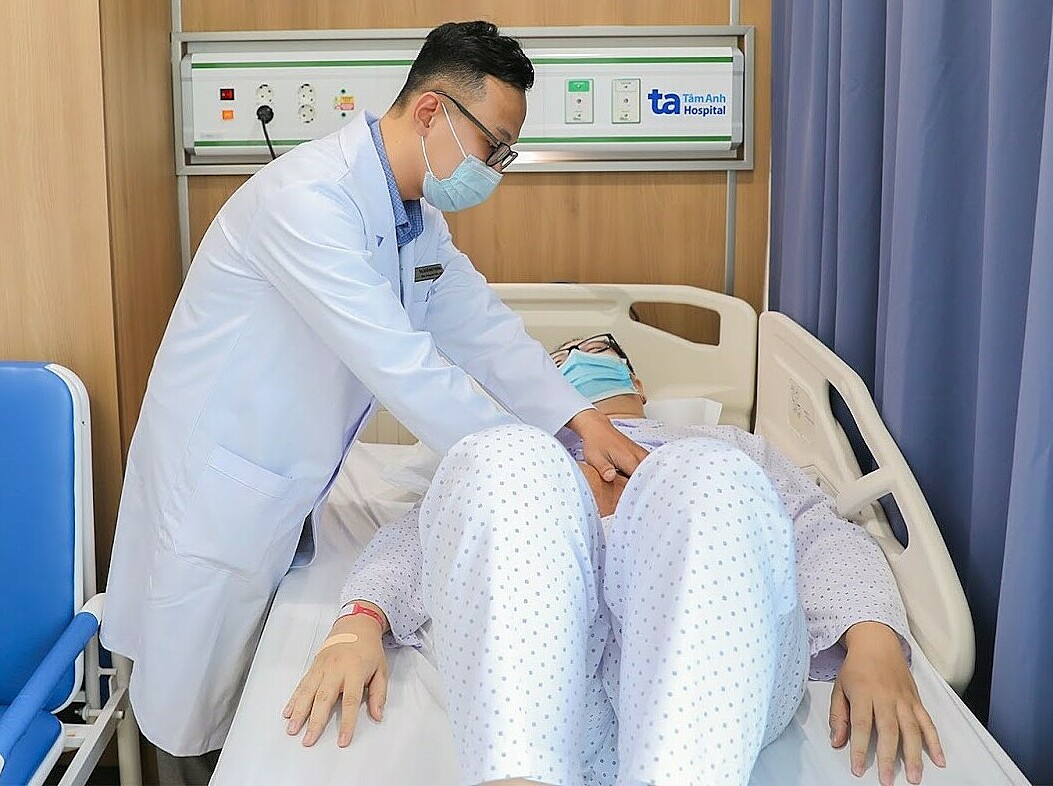Gastroesophageal reflux disease (GERD) occurs when acid and stomach contents flow back up into the esophagus. Normally, when you swallow, a circular band of muscle around the bottom of your esophagus, called the lower esophageal sphincter (LES), relaxes to allow food to pass into your stomach. Then the sphincter closes. If the LES opens too often or doesn't close tightly enough due to weakness or dysfunction, stomach acid can reflux into the esophagus.
Doctor Vo Nhat Truong, from the Endoscopy and Laparoscopic Digestive Surgery Center at Tam Anh General Hospital in TP HCM, explains that continuous reflux irritates the esophageal lining, increasing the risk of esophagitis. Typical symptoms include heartburn (a burning sensation in the chest), acid reflux, nausea, difficulty swallowing, hoarseness, and a chronic cough.
Untreated GERD can lead to more serious complications like esophageal ulcers, esophageal stricture, Barrett's esophagus (a precancerous condition), and esophageal cancer. Treatment depends on the individual case. Mild cases may require dietary and lifestyle changes or medication. In severe cases, doctors may recommend interventional procedures or surgery.
Lifestyle changes: Patients with mild GERD can manage their condition at home through healthy dietary and lifestyle adjustments. These include weight loss if overweight, avoiding caffeinated beverages, limiting fat and alcohol intake, eating smaller, more frequent meals, quitting smoking, avoiding lying down immediately after eating, and elevating the head while sleeping.
Medical treatment: If lifestyle and dietary changes are ineffective, doctors may prescribe medication to reduce stomach acid levels or increase motility in the upper digestive tract. Antacids are typically prescribed for infrequent reflux symptoms. Proton pump inhibitors (PPIs) block acid production. Medications that stimulate intestinal motility help enhance the activity of gastrointestinal smooth muscles. Patients should take medication as prescribed by their doctor.
 |
Doctor Truong examines a patient's abdomen. Photo: Tam Anh General Hospital |
Doctor Truong examines a patient's abdomen. Photo: Tam Anh General Hospital
Surgery and procedures: Several procedures and surgical options are available for treating GERD:
Fundoplication: The upper part of the stomach is used to reinforce the LES, preventing stomach acid reflux. Most cases are performed laparoscopically due to its advantages over open surgery.
Transoral incisionless fundoplication (TIF): This procedure is considered when fundoplication is not feasible. It offers less pain, faster treatment time, and quicker recovery. Doctors use a specialized endoscopic device inserted through the mouth and down the esophagus to create folds at the base of the esophagus. These folds form a new valve that prevents acid reflux from the stomach.
Stretta procedure: An endoscope is inserted into the esophagus, and low-frequency radio waves are transmitted to the esophageal-gastric junction, creating small cuts in the esophageal tissue. As these cuts heal, scar tissue forms, blocking the nerves that react to acid reflux.
Linx surgery: This minimally invasive surgery offers a short recovery time. A small ring of interconnected titanium beads is wrapped around the LES. This procedure helps stabilize the opening and closing of the LES, allowing food to pass easily and preventing reflux.
Partial esophagectomy: In cases of severe esophageal damage from acid reflux or progression to cancer, doctors may recommend removing a portion of the esophagus and reconstructing it using the stomach.
Thao Nhi
| Readers can submit questions about digestive diseases here for doctors to answer. |












